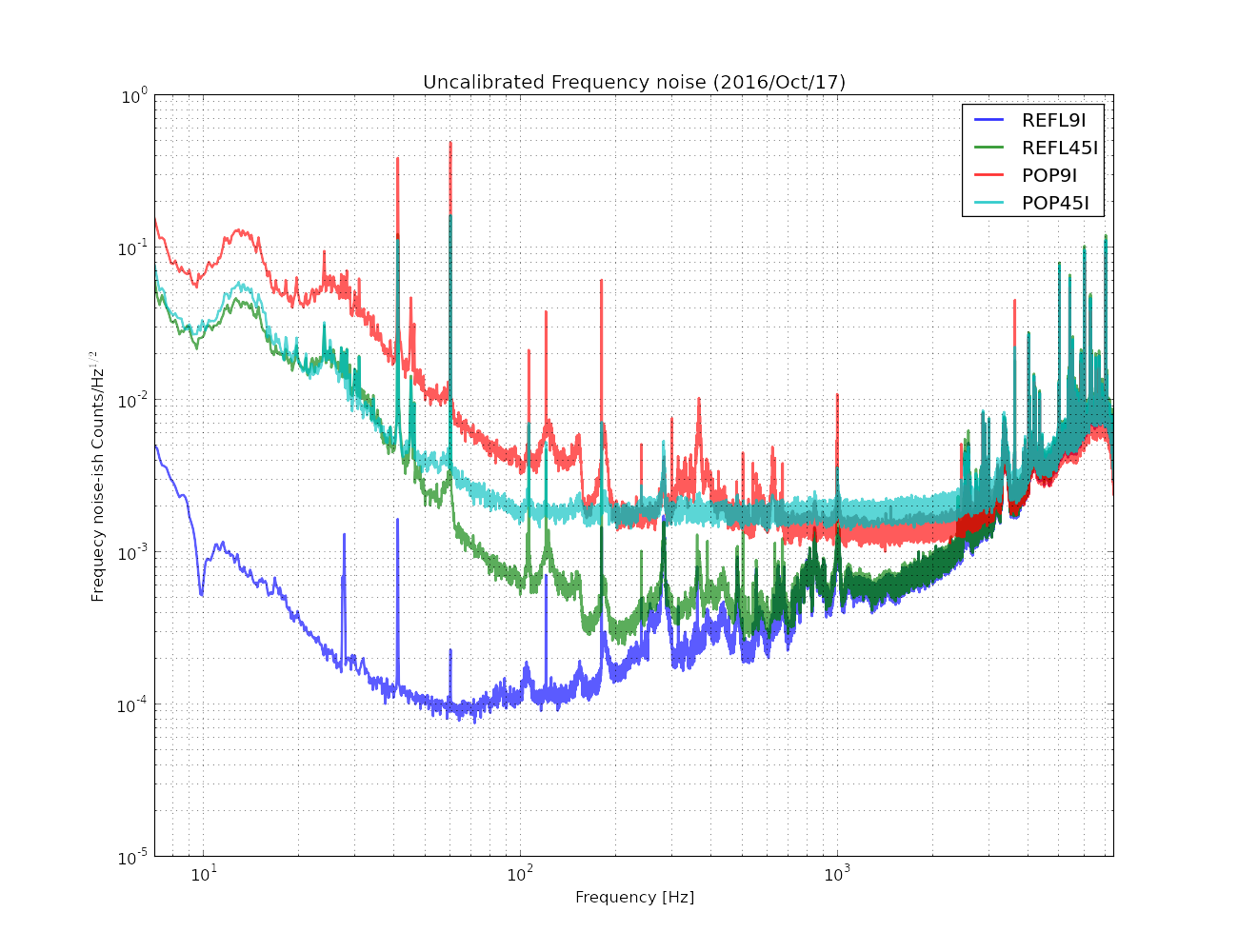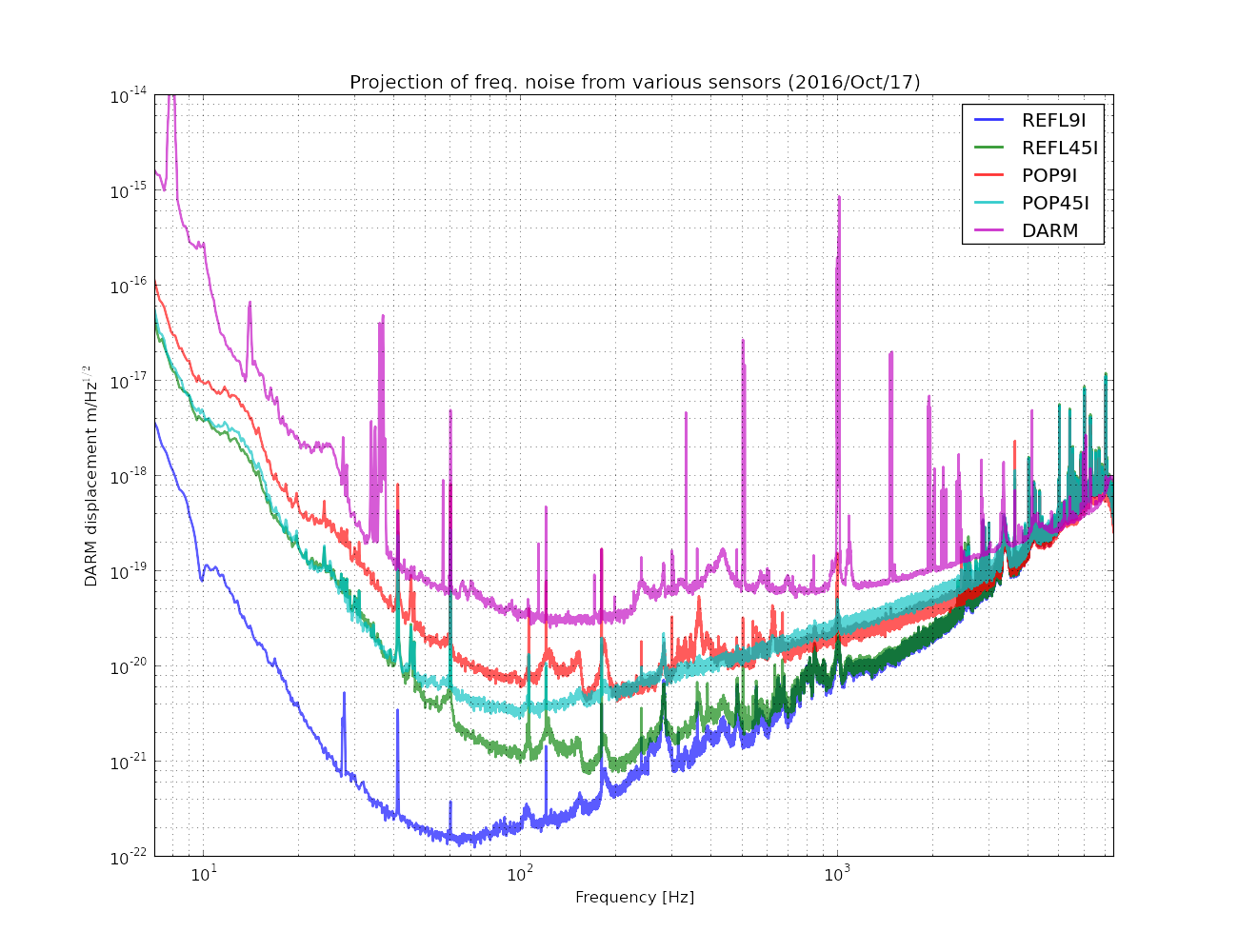Daniel, Evan, Keita, Kiwamu,
We checked the level of frequency noise at various out-of-loop equivalent sensors and then projected them to DARM to see if they make sense at all.
If we accept the projected noises, it is unlikely that frequency noise is the limiting noise source in the 200 - 1 kHz band.
[Various out-of-loop sensors for freq. noise]
We wanted to know the out-of-loop stability of frequency noise. We measured frequency noise transfer functions for the following sensors relative to REFL9I.
-
REFL 45 I
-
POP 9 I
-
POP 45 I
To do this, we excited one of the inputs of the summing node board with broad band noise from 100 Hz to 4 kHz. The relative transfer functions between REFL 9I and these sensors were found to be almost flat as expected. See the upper left panel of the third attachment for the flatness. In the reset of this report, the following scaler values will be used and we do not use the actual measured transfer functions.
-
(REFL45 I) / (REFL9 I) = 0.004 cnts/cnts
-
(POP 9 I) / (REFL 9 I) = 32.2 cnts/cnts
-
(POP 45 I) / (REFL 9 I) = 38 cnts/cnts
We then converted the sensor spectra (taken when the interferometer was in low-noise) by using the above values to (uncalibrated) frequency noise as seen in REFL9I. The below shows (uncalibrated) frequency noise estimated by these sensors.

Good agreement is seen above 3 kHz where all the sensors see the loop-gain-limited frequency noise. For POPs, they are found to be limited by shot noise as expected at frequencies below 2 kHz or so, except that POP 9 sees some extra frequency noise in the jitter band (200 Hz- 1kHz). Since the coherence is not low below 50 Hz, we should not believe the spectra below 50 Hz or so.
[Projection to DARM]
The below plot shows projections of frequency noises to DARM using the different sensors. The coupling transfer function of REFL9I -> DARM was once measured by exciting the same excitation point as the above measurement. We confirmed that the coupling grows proportionally to frequency (29893). Also, see the upper middle panel in the third attachment for the coupling transfer function. For noise projection, I have used a simplified transfer function of 1e-5 x ( f /700Hz) [DARM meters / REFL9I counts]. Since all the out-of-loop sensors are already calibrated to equivalent of REFL 9I digital counts, all of them are just propagated to DARM by multiplying the same coupling transfer functions.

Again, the projection below 50 Hz is not trustable because of low coherence in the measurements. High frequency excess in DARM above 4 kHz seems to explainable by the frequency noise -- all the projections more or less agree with DARM. In the jitter band, 200 Hz - 1 kHz, the closest projection was given by POP 9I which showed some acoustic type structure. Although POP9I is still not high enough to entirely explain what we see in DARM. Moreover, the peak structure seen in POP 9I do not quite match the ones in DARM. Probably those structures in POP 9I are likely some kind of sensing noise.
In any case, if we believe this plot, frequency noise does not seem to be limiting the current DARM in the 200 Hz - 1 kHz band.



























